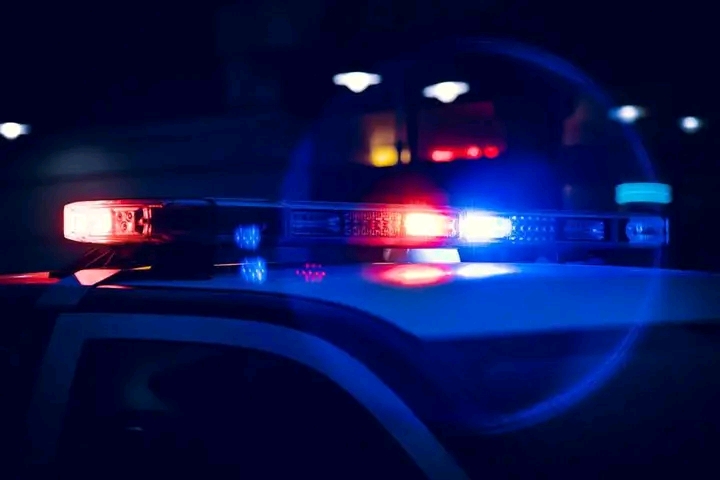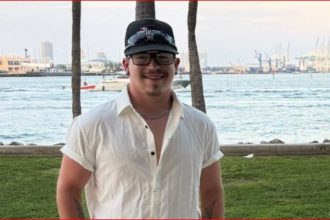Tragedy in Southeast D.C.: Community Reeling After 3-Year-Old Girl Critically Injured in Early Morning Shooting
WASHINGTON, D.C. — In what should have been just another quiet morning in Southeast Washington, D.C., tragedy struck when gunfire erupted unexpectedly, leaving a 3-year-old girl critically injured. The child was sitting inside a car with family members when the unimaginable occurred. It was early Saturday, still dark outside, when the peaceful pre-dawn stillness was broken by the sound of gunshots—turning a moment of routine into one of trauma and heartbreak.
The shooting has sent shockwaves through the community and sparked city-wide outrage and sorrow, particularly because of the victim’s young age and the horrifying circumstances of the incident. Now, as investigators work to piece together the chain of events that led to the shooting, the city is left mourning, questioning, and rallying behind a family forever changed.
A Morning That Turned into a Nightmare
According to initial reports from law enforcement officials, the shooting took place in the early hours of Saturday morning while the child and her family were seated in a parked vehicle. The area, located in Southeast D.C., was reportedly calm at the time, making the sudden eruption of gunfire all the more shocking to nearby residents.
Emergency calls flooded into dispatch shortly after the shots rang out. Responding officers arrived to a chaotic and distressing scene—an injured toddler, bleeding and unresponsive, with horrified family members frantically pleading for help. Paramedics quickly stabilized the child before rushing her to a nearby children’s hospital, where she underwent emergency surgery and was placed in critical condition.
Hospital officials have since confirmed that the child remains under intensive medical care, with her condition being closely monitored by a team of trauma specialists. As of Sunday morning, no updates had been provided on whether her condition had improved or worsened.
The Community Reacts with Shock and Anguish
Word of the shooting spread rapidly throughout Southeast D.C., especially once it became clear that the victim was an innocent 3-year-old child. For many, the news was both devastating and infuriating—a stark reminder of the growing gun violence problem affecting even the youngest and most vulnerable members of the community.
Local residents have gathered near the site of the shooting to hold vigils, light candles, and leave stuffed animals, balloons, and handwritten notes. “She’s just a baby,” said one local mother during a gathering. “She should be watching cartoons right now, not fighting for her life.”
The child’s family, though asking for privacy, has issued a brief public statement expressing both their anguish and gratitude. “We are heartbroken. We ask for prayers, strength, and justice for our daughter. She is fighting, and we believe in her strength.”
Surge in Public Outrage and Demand for Change
The shooting has galvanized renewed calls for action from city leaders, advocacy groups, and everyday citizens alike. Community leaders have condemned the violence, calling on authorities to prioritize safety in neighborhoods historically impacted by systemic neglect, poverty, and cycles of crime.
“This is not just about one child, tragic as this incident is,” said one local advocate during a press conference. “This is about a system that continues to fail our children. When a 3-year-old is shot sitting in a car, we’ve reached an unacceptable crisis point.”
In response, city officials have pledged an increase in patrol presence across vulnerable neighborhoods and are expanding violence prevention initiatives. The mayor’s office released a statement acknowledging the pain the city is feeling and vowing to pursue justice swiftly.
“This cannot become our norm,” the statement read. “Every child deserves to grow up free from the fear of violence. We will not rest until the person or persons responsible for this heartbreaking act are held fully accountable.”
Investigation Underway: Few Answers So Far
The Metropolitan Police Department has confirmed that an investigation into the shooting is ongoing, and officers are seeking assistance from the public in identifying suspects or providing any surveillance footage that may shed light on the events leading up to the shooting.
According to preliminary findings, the child and her family were not necessarily the intended targets, suggesting that this may have been an instance of mistaken identity or reckless crossfire. Regardless of intent, officials have emphasized that accountability is essential.
Detectives have canvassed the area, spoken with residents, and collected multiple shell casings from the scene. Ballistics testing is underway, and authorities are also reviewing nearby security footage to try to determine the shooter’s identity.
In addition to traditional law enforcement efforts, community violence interrupters—many of whom are former offenders now working in restorative justice programs—have stepped in to help calm tensions and gather any information that could help in the investigation.
The Toll on Children and Families
This tragic shooting underscores a troubling pattern that has grown more pronounced in recent years: the rising number of young children injured or fatally wounded by gun violence. In cities across the nation, stories like this one have become all too common, where the innocence of childhood is shattered by bullets meant for no one—or everyone.
Mental health professionals have also highlighted the lasting psychological impact of gun violence on surviving children and their families. Even for those not physically injured, witnessing or hearing about such traumatic incidents can leave deep emotional scars, especially for children in already vulnerable communities.
Several local schools, daycares, and community centers have announced that they will be providing grief counseling and trauma-informed support resources to help families and children process the event.
A Moment of National Reflection
The incident has sparked outrage well beyond D.C.’s borders. Social media platforms lit up with messages of support for the family, as well as frustration over the persistent reality of gun violence in American cities. Celebrities, activists, and national figures have shared their grief and joined calls for policy reform.
Some have pointed to the need for greater gun control legislation, while others have emphasized community-led interventions, education, and addressing root causes like poverty and limited access to opportunity.
“There is no acceptable explanation for why a 3-year-old should be shot in her own neighborhood,” one tweet read. “If we can’t protect our children, what are we doing?”
Moving Forward: A City Refuses to Be Defined by Tragedy
Even as the community mourns and demands change, there is also a sense of resilience growing among residents. Faith leaders have held prayer circles, youth organizations are planning safe play initiatives for local kids, and neighborhood watch groups are renewing their commitment to safety and accountability.
“This isn’t just about what happened,” said a community organizer during a weekend rally. “It’s about what we do next. We owe it to that little girl to build a safer world for her to come home to.”
The little girl—whose name is being withheld to protect the family’s privacy—remains in critical condition. Her fight for life has now become symbolic of a larger struggle taking place in neighborhoods across the country: the fight for dignity, safety, and the right of every child to grow up without fear.
Final Reflections: A Call to Conscience
This tragic incident, as gut-wrenching as it is, also serves as a moment of national reckoning. It forces a simple but urgent question: how many more children must suffer before action is taken?
It is not enough to express sorrow. The moment demands more—more compassion, more accountability, more investment in communities, and more courageous conversations about the systems and circumstances that allow such tragedies to happen.
A little girl is fighting for her life. Her community is fighting for its soul. The time for silence has passed. Now is the time for change.
Let her story be the one that finally moves us—not just to tears, but to action. Let her recovery, if she survives, be met with a renewed commitment from all corners of society: never again. Not one more child. Not one more family. Not one more morning like this.




